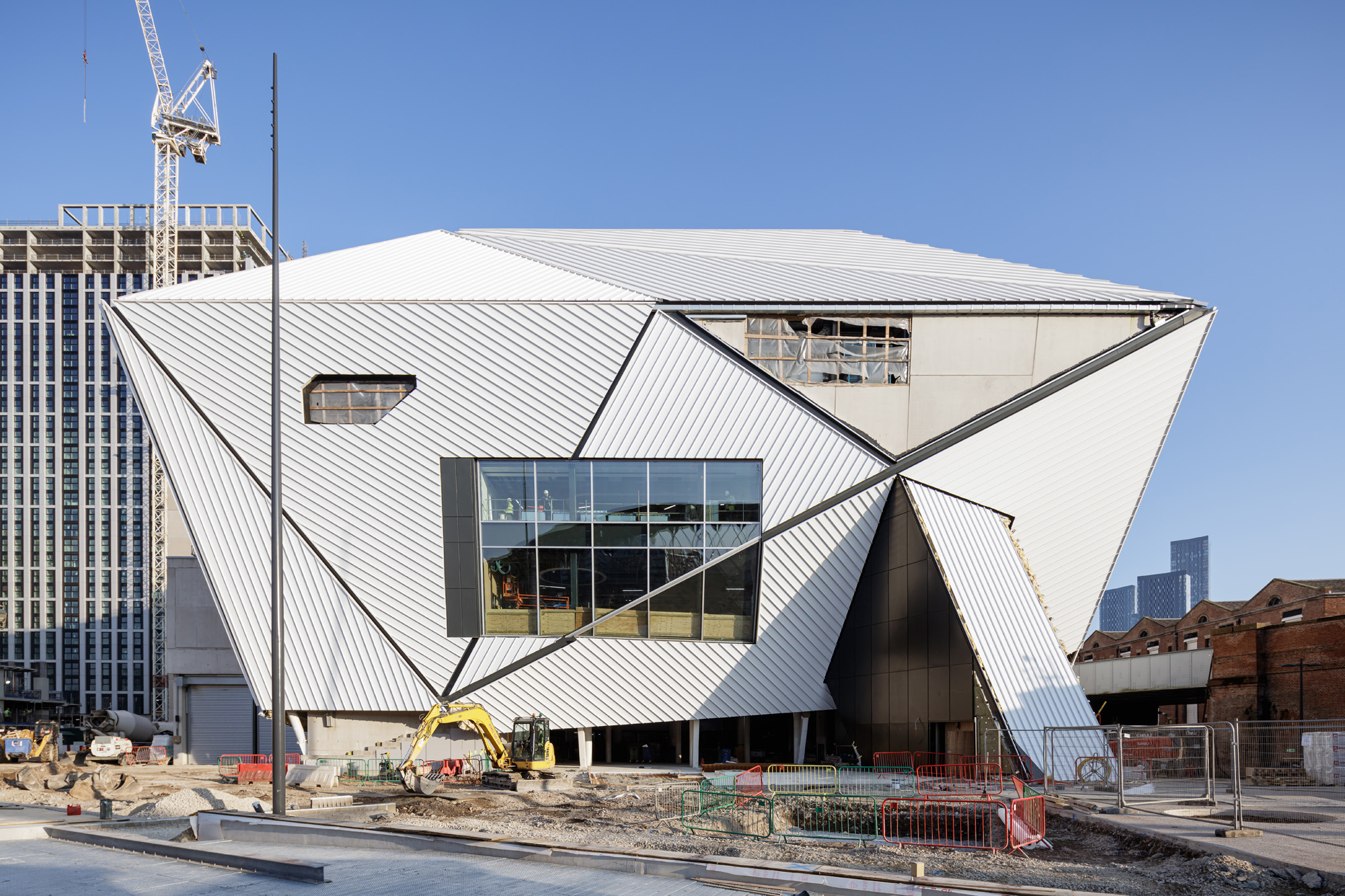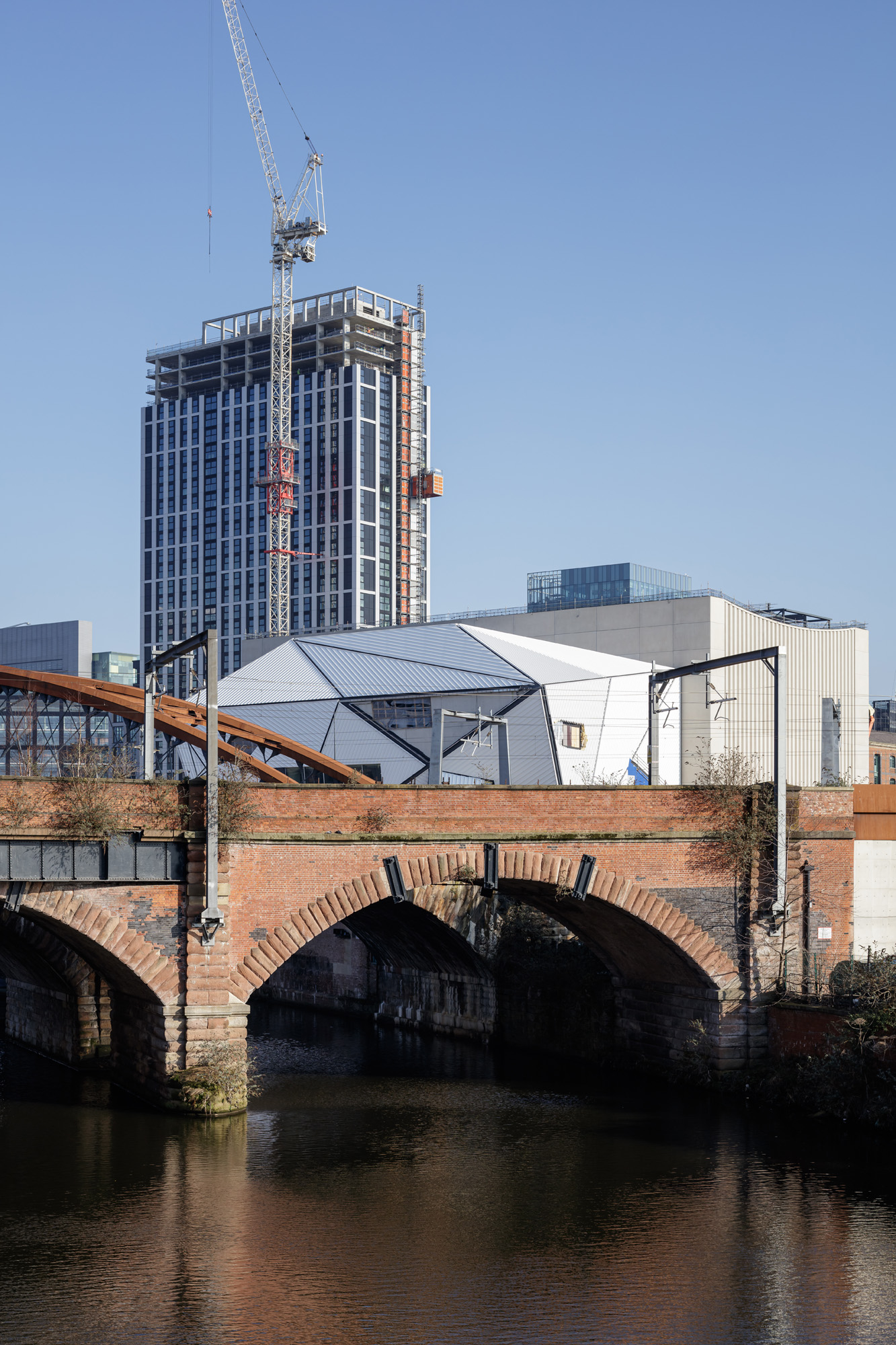
One thing is certain; when Factory International opens in Manchester this coming autumn, it will be like nothing the art world has seen before. OMA is adept at creating architecture that challenges and surprises, especially in the field of performance. Ellen van Loon, the OMA partner in charge of the project, was also behind the practice’s seminal Casa da Música in Porto (2005), while the studio’s more recent Taipei Performing Arts Center (2022) is nothing if not unconventional, all bold shapes and embracing public, community life.
The same can be said for Factory International, which sees a soft opening this June, allowing its first guests in to enjoy a series of events during the Manchester International Festival’s (MIF) 2023 edition - while continuing to finesse construction work towards a full, official opening in October.

Factory International aims to break barriers
What makes it special? It aims to break the barriers, quite literally, between audience and the performers; the front and back of stage. ‘The most important thing for me is that this is a building for the next generation, a building that gives people a place to try new things, not to conform to what you should do – a testing ground, an incubator,’ Van Loon says.
‘The challenge with this project was that it was anything but a traditional theatre. We were discussing the shape of a new era for theatre; a building that doesn’t have a front of house or back of house distinction – every space needed to be used for everything.’

Factory International: led by openness and adaptability
This indeed encapsulates the spirit of Factory International. The fairly raw structure was purposely conceived to be malleable. It draws inspiration from warehouses, both in the sense of a space that can hold whatever you need it to, but also it terms of its neighbourhood’s heritage, as it translates the area’s spirit of place for the 21st century – it is situated in a part of town by the River Irwell that may now be changing, but was not too long ago full of industrial buildings, ‘surrounded by civil engineering,’ Van Loon explains.
Inside, this corresponds to extreme openness and adaptability. The backstage connects to the performance hall through a large round window. This symbolises van Loon’s attempt to provide artists with contemporary, liveable spaces to rest and prepare between shows. Dressing areas are typically dark, simple places but these are not only purpose-designed but feature ample natural light and a direct connection to the stage.

Around the stage, equipment is visible everywhere, even the bits the public normally doesn’t see. ‘Of course we had to make sure that it’s all safe, but also that everything remains open and transparent,’ says Van Loon. Unsurprisingly, this makes a building very flexible - the antithesis of the typical example of a theatre where everything is fixed and all the technical elements are hidden away. ‘You can build the fly tower wherever you want, the large grid enables you to hoist and rig in any position you want. There is fixed seating on the balcony, but everything else is movable.’
As a result, the architectural context has led to interesting discussions with artists. ‘Artists are surprised, and sometimes bemused by [the building],’ Van Loon smiles. ‘I wanted to create something that takes them out of their comfort zone.’ There is true dialogue between building and users here, as both the building can change to fit a performance’s needs, but the artists also respond to the building in unexpected ways. OMA worked closely with MIF and its artistic director and chief executive John McGrath to fine-tune every element, from its clever purpose-built truck lift to bring in large elements, and its movable acoustic wall that can divide up the main hall into two, to its 1600-seat auditorium that can accommodate anything from ballet, theatre, music to cross-art performances.
‘We love to work on performance buildings. Every time we dream further!’ concludes Van Loon. ‘That is the joy of reinventing the performance building.’







